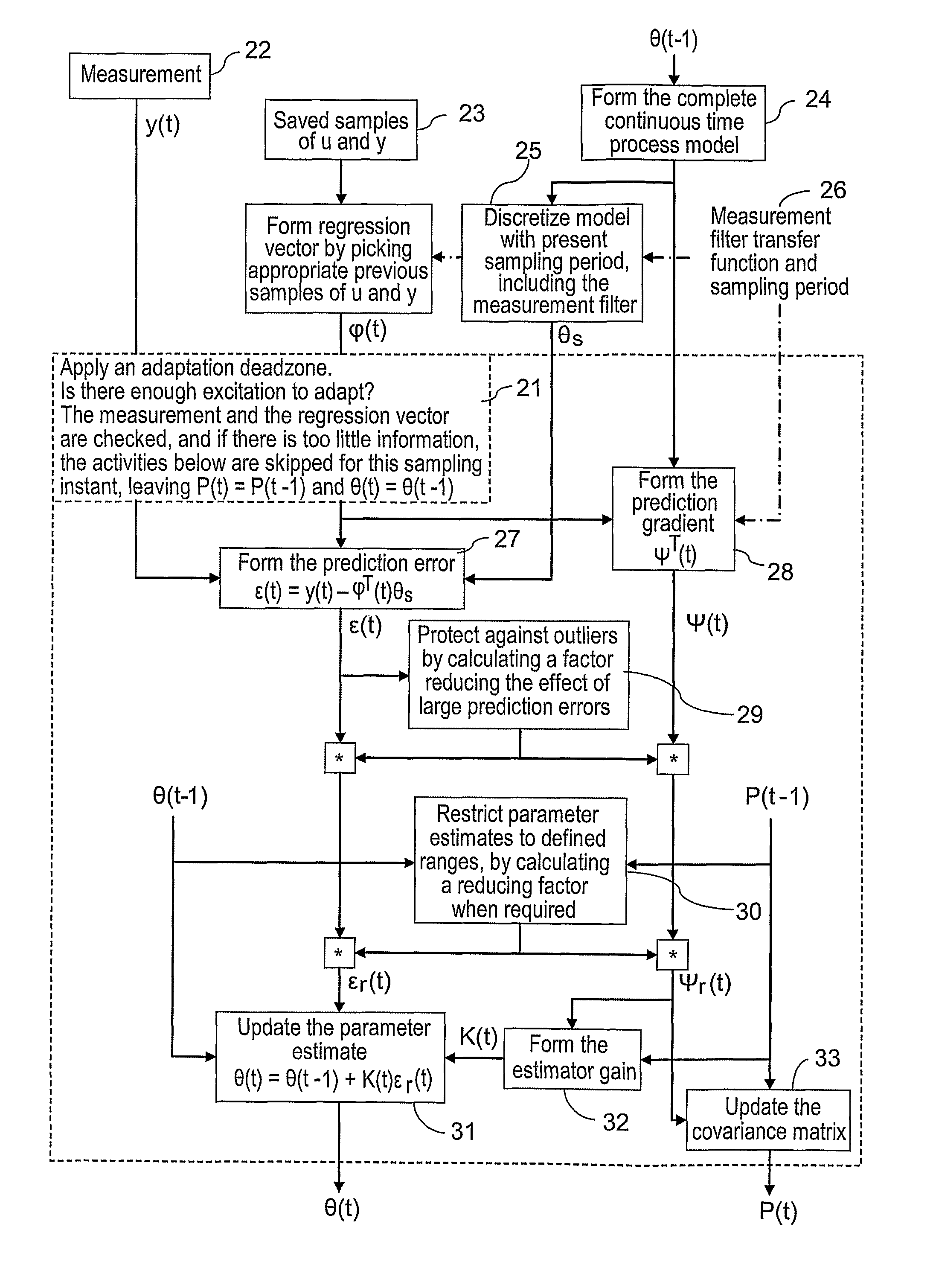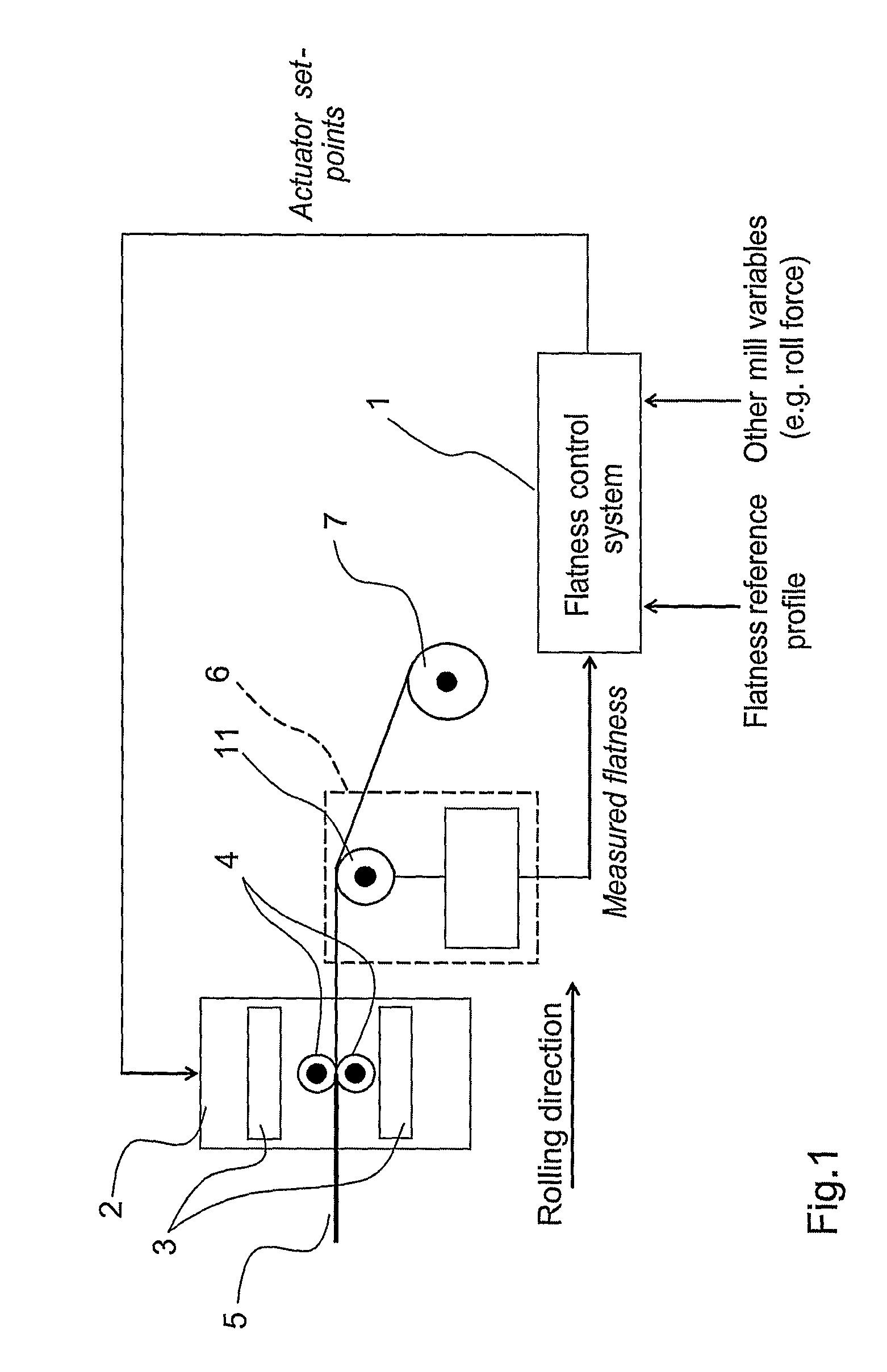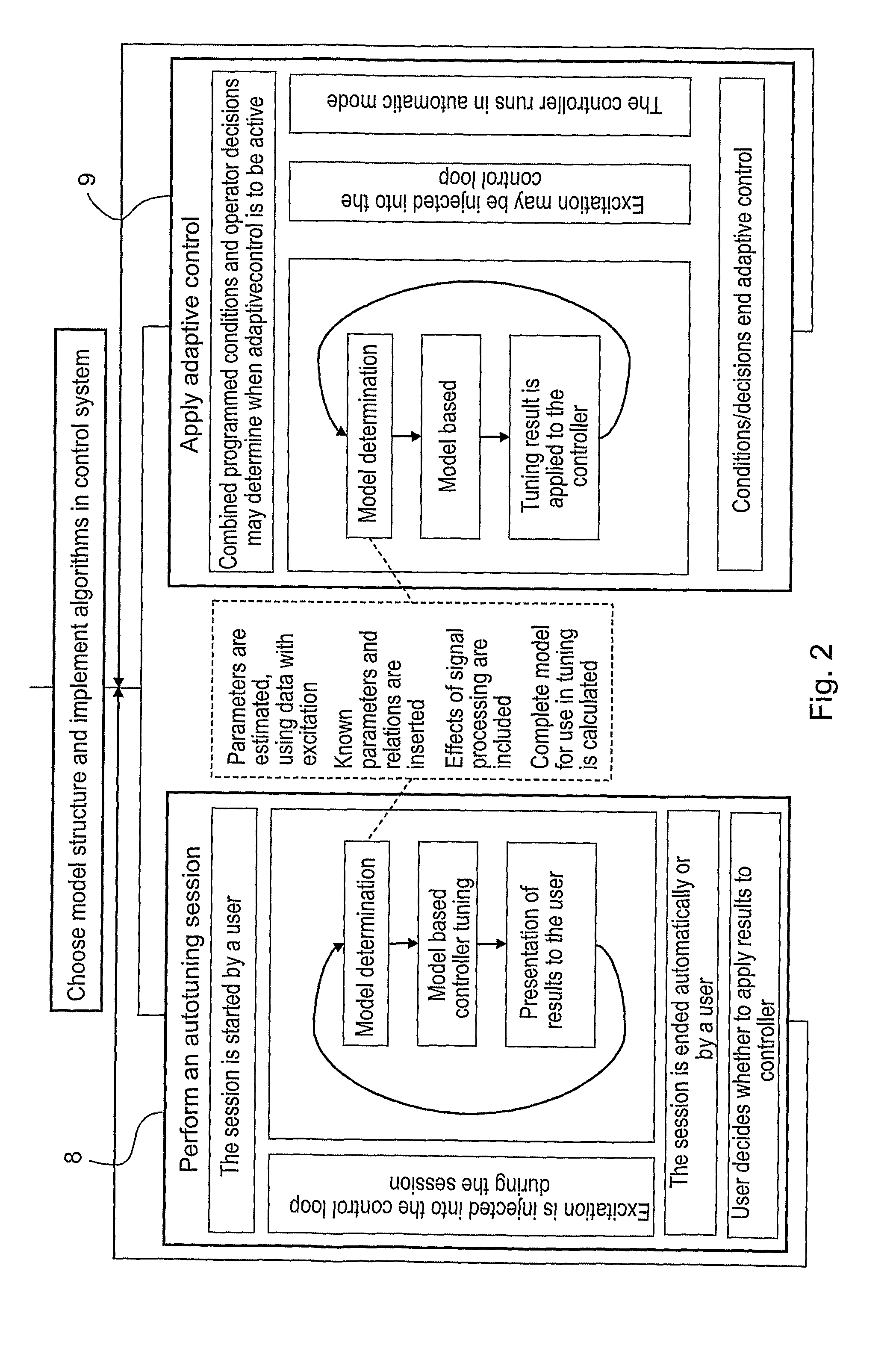Method and device for tuning and control
a technology of industrial processes and tuning devices, applied in the direction of profile control devices, instruments, horology, etc., can solve the problems of inability to accurately predict the real the inability to accurately predict the actual behavior of the mill, so as to achieve less scrap, improve the output of the mill, and improve the effect of rolling speed
- Summary
- Abstract
- Description
- Claims
- Application Information
AI Technical Summary
Benefits of technology
Problems solved by technology
Method used
Image
Examples
Embodiment Construction
[0039]The invention concerns a method for automatic controller tuning that can be used for one-shot tuning and equally well for adaptive control. In a typical application of the invention, an industrial process has to some extent time-invariant dynamics, and to some extent time characteristics—such as dead-time and time constants—inversely proportional to the production speed or material flow rate. The parameterization may be chosen according to actual knowledge about the behavior of the process and the influence of the production speed, so that the true but unknown values of the estimated parameters will be constant, independent of the speed and other varying parameters. Thereby, the estimation will not be disturbed by speed variations, and there will be few parameters to estimate. As a consequence, more accurate estimates are obtained in a shorter time, and they are not disturbed by running the process with normal production according to planned schedules during an auto-tuning ses...
PUM
| Property | Measurement | Unit |
|---|---|---|
| flow rate | aaaaa | aaaaa |
| material flow rate | aaaaa | aaaaa |
| time constant | aaaaa | aaaaa |
Abstract
Description
Claims
Application Information
 Login to View More
Login to View More - R&D
- Intellectual Property
- Life Sciences
- Materials
- Tech Scout
- Unparalleled Data Quality
- Higher Quality Content
- 60% Fewer Hallucinations
Browse by: Latest US Patents, China's latest patents, Technical Efficacy Thesaurus, Application Domain, Technology Topic, Popular Technical Reports.
© 2025 PatSnap. All rights reserved.Legal|Privacy policy|Modern Slavery Act Transparency Statement|Sitemap|About US| Contact US: help@patsnap.com



